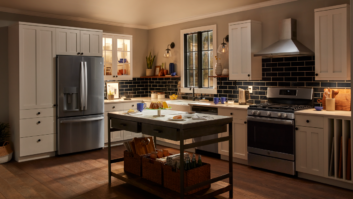It’s 7:00 p.m. on Friday night, and it has been a long, busy week. Your head hurts a little from the countless decisions you’ve made, problems you’ve solved and, hopefully, deals you’ve put together. Finally, you get a chance to sit down and stop.

But, as soon you place your phone on the counter it starts ringing. You peek at the screen and notice that it is your VIP client calling. You can’t avoid this call; you pick up the phone and quickly realize that your week isn’t over just yet.
“I’m having a party at my house and nothing works. I need one of your techs out here, now!” We’ve all had calls like this. You carefully calm your client down, and then start the process of troubleshooting over the phone, totally blind.
Wouldn’t it be great if you could hide one of your technicians in the house, to text you immediately when any critical device (control processor, lighting control panel, security system) locked up? That’s ridiculous, I know, but there are, however, a series of “device supervision” products on the market that do the next best thing.
These relatively small, black boxes need just power and a network connection to monitor the operating status of all devices on the network. Once connected to the network, the ~$250 devices can be configured to notify designated people when a device locks up. In some cases, the devices can also notify parties when certain changes happen in the system, e.g. if a battery on a remote must be replaced or firmware should be updated. Some of the more advanced devices will allow you to update software remotely or offer more sophisticated functions.
Device supervision products are often visible from a dashboard on a computer or app-based interface of a smartphone or tablet. These dashboards will allow you to view the operating status of all network-attached devices in a system, for each of your connected clients. Many will also offer the ability to view historical data for the system. For instance, if a client calls on Monday and complains about a “slow network” on Friday, you could roll the tape back and view the activity log from Friday night to determine what may have bogged down the network. This service does come with a small investment in cloud services like iCloud or Dropbox.
These wonderful devices are available at a very reasonable price and offer tremendous value. They will not only provide full visibility of a system at any time, from anywhere, but they also empower integrators to be proactive in their service and support role to their clients.
The good news is that supervision devices can be used on every project. This is especially important for vacation homes, where the system may not be used very often and could be located in very remote areas. Inclusion of these devices provides every integrator with a competitive edge and ensures a more positive user experience for their most valuable asset: the customer. Without happy customers, no business can survive.
When I worked as an integrator (for 20 years of my career), I would include a section in my proposals titled “Integration Hardware and Materials.” This section would often include some of the following items: surge protection/power conditioners, wire, interconnect cables, IR systems, cooling fans, etc. I would often tell clients that these were all the small parts and materials that were necessary to make the system operate. This is where I suggest including supervision devices. My justification to my client would remain the same, just with one additional word at the end: “reliably.”
I would further explain to the client that devices are complicated, just like computers and smartphones, and they will lock up from time to time. When they do, with device supervision we can be notified and often resolve the issue long before it becomes a problem for them and their family.
Monitoring can be handled in a few different ways, the easiest being to add it into the price of the device and state that it includes “X” many years of cloud supervision with additional years being billed at a rate of $X/year or month. This can also be set up as an auto-bill feature with most accounting systems.
Device supervision products are a very hot topic in the industry at the moment, as are recurring month revenue (RMR) models. I suspect this to become a standard device in systems of the future, with many adopting this practice now. The bottom line is every business should deliver the best possible experience for their clients, otherwise someone else will… soon.







